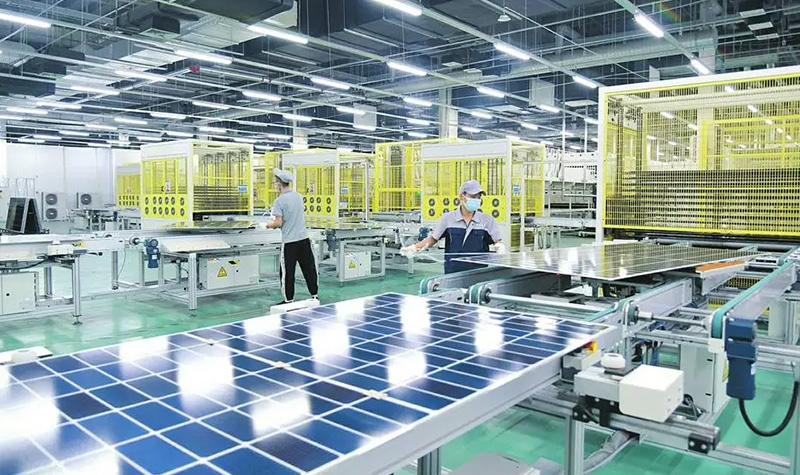In the photovoltaic industry, gases play a crucial role in the manufacturing process. Various types of gases play different roles in the manufacturing process of solar cells and other optoelectronic devices to ensure product quality and performance.
Firstly, nitrogen is an important protective gas that can maintain the purity of the manufacturing environment and avoid contamination of photovoltaic materials by impurities and oxygen. In the production process of solar cells, a pure nitrogen environment helps to ensure the quality and performance of the product.
Hydrogen is an important process gas that can be used for atmosphere control in the manufacturing process of thin film solar cells. Hydrogen can be used in the hydrogenation process to improve material properties and enhance battery efficiency. Meanwhile, hydrogen can also be used to clean and etch the surface of solar cells to remove oxides or other unwanted materials.
Argon is commonly used as a protective gas to prevent the oxidation of materials in photovoltaic equipment by oxygen or other gases. Argon can also be used for vapor deposition (CVD) and the creation of inert atmosphere environments. In the production of photovoltaic materials, vapor deposition is a common preparation technique, and argon gas can be mixed with other gases (such as silicon source gas or metal organic compounds) to control the composition and structure of the material.
Oxygen is sometimes necessary in the manufacturing process. Although it is necessary to maintain an anaerobic or low oxygen environment to prevent material oxidation, sometimes oxygen is also needed for material oxidation or oxidation processes to improve the performance of specific materials.
In addition, some special gases are also used in photovoltaic manufacturing, such as hydrofluoric acid, which is commonly used in the cleaning and etching processes of solar cells to remove surface oxides or unnecessary materials. Nitrogen oxides can be used in some nitriding processes in solar cells to improve material performance.
Overall, the application of gases in the photovoltaic industry is mainly aimed at controlling the manufacturing environment, improving material performance, maintaining material purity, and ensuring the performance and efficiency of solar cells and other optoelectronic devices. With the continuous development of photovoltaic technology, the application of gases may also evolve and expand.


